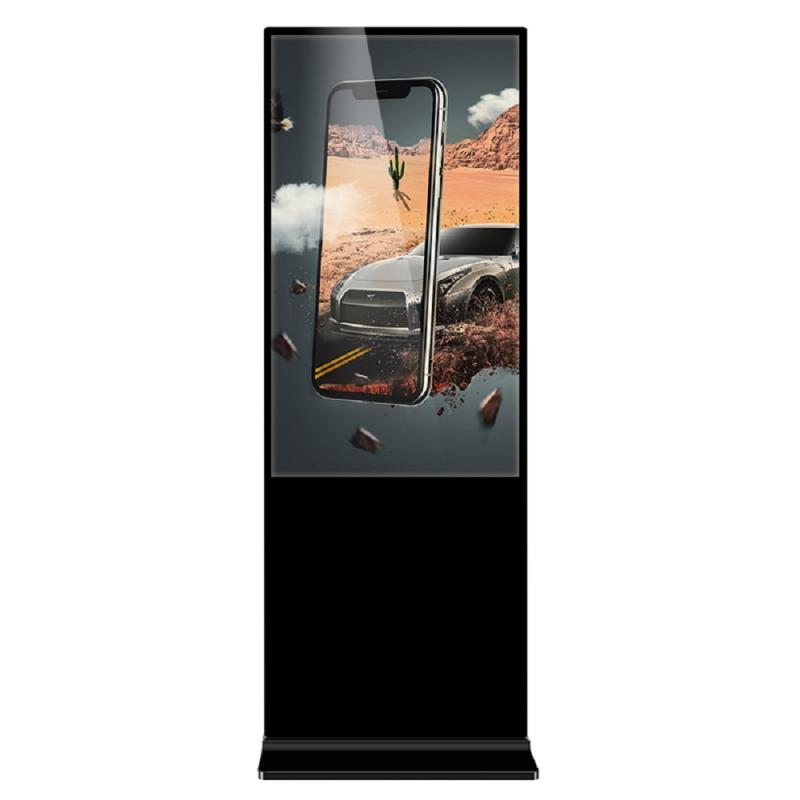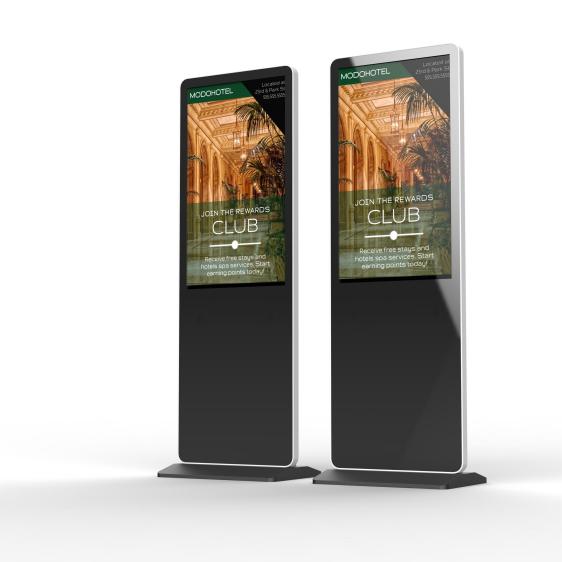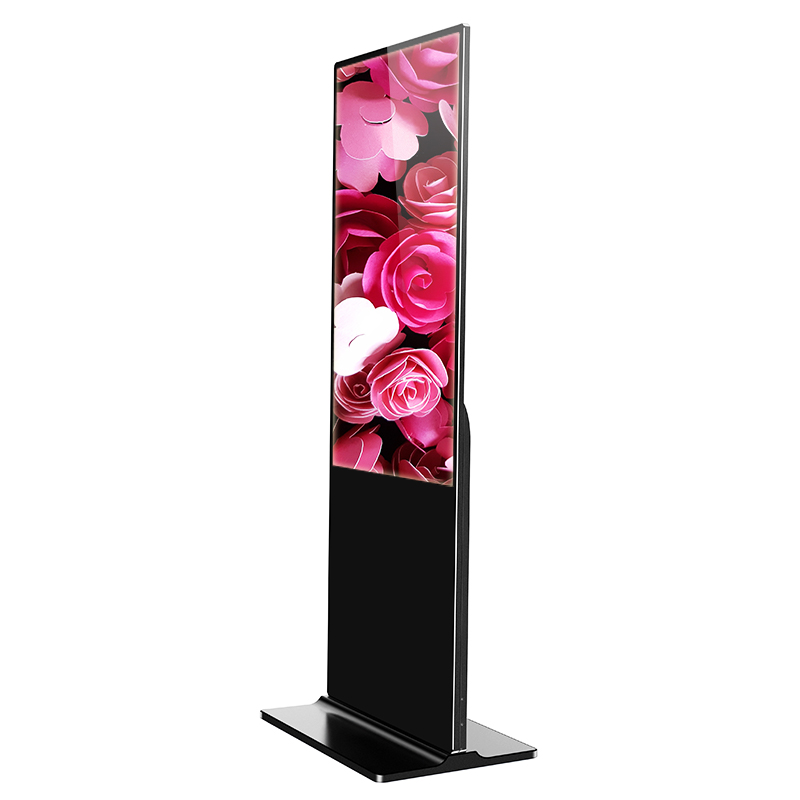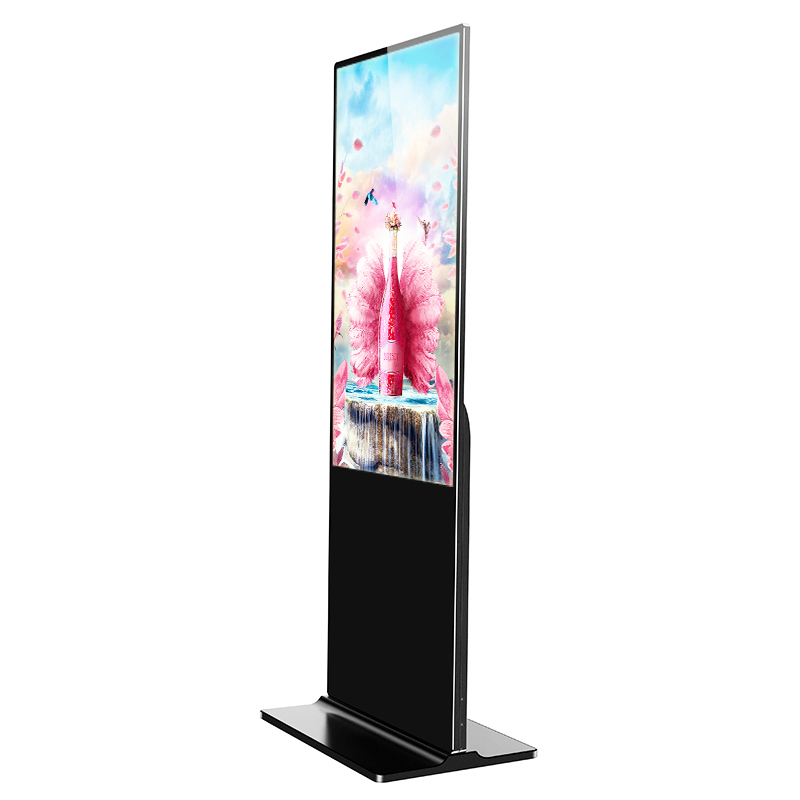
Below is a video of digital signage kiosks, watch it carefully to learn more!
Watch the video above to discover more about digital signage kiosks, including their cutting-edge features, versatile applications, and how they can elevate your business's visibility. Don't miss out—order today to take advantage of our special offer and enhance your customer engagement!
| Components | Specifications | Manufacturing Process |
|---|---|---|
| Display Screen | LCD/LED, 1080p to 4K resolution, 32" to 75" size | Screen assembly involves high-resolution display panels, mounted on durable frames. Screens are tested for brightness, color accuracy, and responsiveness. |
| Touchscreen Panel | Capacitive or Infrared touch technology, multi-touch support | Touchscreen panels are integrated with the display, calibrated for accuracy and responsiveness, then sealed to protect against dust and moisture. |
| Processor/CPU | Intel/ARM-based processors, 2.0 GHz or higher | The CPU is selected for high performance and energy efficiency, integrated into the kiosk's control board, and tested for reliability under various load conditions. |
| Operating System | Windows, Android, or Linux | The OS is pre-installed on the kiosk's internal storage, optimized for fast boot times and smooth operation with the kiosk's specific hardware configuration. |
| Storage | SSD, 128GB to 1TB | Storage drives are securely installed within the kiosk, ensuring quick access to content and smooth performance, with rigorous testing for durability and data integrity. |
| Connectivity | Wi-Fi, Ethernet, Bluetooth, HDMI, USB ports | Connectivity modules are installed and tested for stable and high-speed data transmission, with secure casing to protect against environmental factors. |
| Enclosure/Casing | Powder-coated steel or aluminum, weather-resistant options | Enclosures are designed, cut, and assembled to provide a secure, aesthetically pleasing housing for all components, followed by finishing processes like powder coating for durability. |
| Cooling System | Ventilation fans or passive cooling design | Cooling solutions are integrated into the kiosk's design, ensuring efficient heat dissipation and maintaining optimal operating temperatures. |
| Software | Content management system (CMS), remote monitoring software | Custom software is developed or configured to control the content displayed, enabling easy updates and remote management, followed by extensive testing for usability and reliability. |
| Power Supply | AC 110V/220V input, with surge protection | Power supplies are installed with protective components to safeguard against electrical surges and tested under different power conditions for reliability. |
Design & Prototyping: Initial design sketches are created, followed by prototype development to refine form and function.
Component Sourcing: High-quality components are sourced, including displays, processors, and enclosures, ensuring performance and longevity.
Assembly: Components are assembled in a controlled environment, with attention to detail in wiring, mounting, and integration.
Quality Control: Each unit undergoes rigorous testing for functionality, including touchscreen responsiveness, display quality, and software performance.
Finishing & Packaging: Once quality checks are completed, the kiosks are cleaned, finished, and securely packaged for shipment.
Digital signage kiosks are composed of advanced hardware and software components that work together to deliver a seamless user experience. The hardware typically includes a high-definition display screen, often ranging from 32 to 75 inches, designed for vibrant, crisp visuals. These screens are usually paired with a capacitive or infrared touchscreen panel that supports multi-touch capabilities, ensuring smooth and responsive interactions. The kiosks are powered by robust processors, such as Intel or ARM-based CPUs, which enable quick data processing and efficient content delivery. Additionally, they come equipped with solid-state drives (SSD) for reliable and fast storage, as well as multiple connectivity options, including Wi-Fi, Ethernet, and Bluetooth, to support remote content management.
On the software side, digital signage kiosks are typically integrated with a content management system (CMS) that allows businesses to easily create, schedule, and update content remotely. This software is designed to be user-friendly, providing tools for customizing the kiosk's interface and managing media files. The kiosks may also include remote monitoring software that enables real-time diagnostics and troubleshooting, ensuring minimal downtime. Combined, the hardware and software in digital signage kiosks offer a powerful platform for delivering engaging, dynamic content in various environments, from retail spaces to corporate settings.

Digital signage kiosks are versatile tools used across various industries, offering numerous applications and benefits. In retail, these kiosks enhance customer engagement by displaying promotional content, enabling self-service checkouts, and providing product information, which leads to increased sales and a better shopping experience. In transportation hubs like airports and train stations, digital signage kiosks streamline the flow of information by offering real-time updates on schedules, wayfinding assistance, and ticket purchasing options, improving passenger satisfaction.
In the hospitality sector, these kiosks facilitate faster check-ins, provide local information, and allow guests to explore hotel amenities, contributing to a more personalized and efficient service. Healthcare facilities use digital signage kiosks to manage patient check-ins, display important health information, and reduce wait times, thus improving overall patient care. Educational institutions benefit from these kiosks by using them to deliver announcements, campus navigation, and event information, fostering a more connected campus environment.
The benefits of digital signage kiosks are numerous. They provide businesses with a dynamic platform for targeted communication, reduce operational costs by automating tasks, and enhance customer satisfaction by offering interactive and personalized experiences. Moreover, they allow for real-time content updates, ensuring that information is always current and relevant, and they can be customized to fit the specific needs of any business or organization.

Power On: Ensure the kiosk is properly connected to a power source and switch it on using the designated power button or touchscreen command.
Content Selection: Navigate through the touchscreen interface to select the desired content or menu options displayed on the screen.
Interactive Features: Use touch gestures like tapping, swiping, or pinching to interact with the content, access additional information, or make selections.
Input Data: If needed, input data using the on-screen keyboard or external devices like a card reader, barcode scanner, or NFC sensor.
Navigate Menus: Follow on-screen prompts to browse through different sections, such as product catalogs, service information, or directories.
Complete Transactions: For payment-enabled kiosks, complete purchases by following the checkout process, which may involve selecting payment methods and confirming orders.
Power Off/Log Out: After completing your tasks, either log out (if applicable) or allow the kiosk to return to its home screen. If necessary, power off the kiosk using the provided controls.

Screen Size and Resolution: Customize the kiosk with various screen sizes (ranging from 32" to 75") and resolutions (Full HD to 4K) to fit specific display needs and environments.
Touchscreen Technology: Choose between different touchscreen technologies, such as capacitive, infrared, or resistive, based on the level of interaction and sensitivity required.
Enclosure Design: Opt for custom enclosures made from materials like steel, aluminum, or tempered glass, with options for different colors, finishes, and branding elements.
Software Integration: Customize the kiosk’s software with specific content management systems (CMS), analytics tools, or remote management platforms tailored to the business's operational needs.
Connectivity Options: Select from various connectivity options, including Wi-Fi, Ethernet, Bluetooth, or 4G/5G, depending on the location and intended use of the kiosk.
Peripheral Devices: Integrate additional peripherals like printers, barcode scanners, card readers, or NFC/RFID modules to enhance the functionality and user interaction.
Environmental Protection: Add custom features for outdoor use, such as weatherproofing, UV protection, and temperature control systems to ensure durability in harsh conditions.

The cost of digital signage kiosks varies depending on factors like screen size, design, customization, and additional features, typically ranging from $1,500 to $15,000 per unit. Initial investment includes the hardware, software, installation, and potential ongoing maintenance fees. Despite the upfront costs, the return on investment (ROI) for digital signage kiosks can be significant. These kiosks enhance customer engagement, drive sales through targeted advertising, and reduce the need for printed materials, saving costs over time. Moreover, they offer real-time content updates, allowing businesses to quickly respond to market changes and promotions, leading to increased revenue. The ability to integrate data analytics also enables businesses to track user interactions, optimize content strategies, and further improve ROI. By improving operational efficiency, reducing labor costs, and creating a dynamic customer experience, digital signage kiosks offer a strong financial return, often recouping the initial investment within a few years.

| Type | Screen Size Options | Design | Price Range (USD) |
|---|---|---|---|
| Freestanding Kiosks | 32", 43", 55", 65" | Sleek, standalone units with a modern design for high visibility. | $2,000 - $8,000 |
| Wall-Mounted Kiosks | 24", 32", 43", 55" | Compact, mounted on walls for space-saving and accessibility. | $1,500 - $6,000 |
| Outdoor Kiosks | 43", 55", 65", 75" | Weatherproof, durable materials, with protective enclosures. | $5,000 - $15,000 |
| Tabletop Kiosks | 15", 22", 32" | Smaller, designed for placement on counters or tables. | $1,000 - $4,000 |
| Interactive Kiosks | 32", 43", 55", 65" | Includes touchscreens and interactive features for engagement. | $2,500 - $10,000 |
| Double-Sided Kiosks | 55", 65", 75" | Two screens back-to-back, for viewing from multiple directions. | $6,000 - $12,000 |
| Wayfinding Kiosks | 32", 43", 55", 65" | Includes maps, directories, and navigation tools for guidance. | $3,000 - $9,000 |
Identify Your Needs: Determine the purpose of the kiosk, whether it's for advertising, wayfinding, or customer interaction. Identify the specific features and functionalities you require, such as touchscreen capabilities, connectivity options, or integration with existing systems.
Set a Budget: Establish a clear budget that includes the cost of the kiosk hardware, software, installation, and any potential ongoing maintenance. Consider both short-term and long-term costs, including potential ROI.
Research Vendors: Look for reputable manufacturers and suppliers who specialize in digital signage kiosks. Compare their offerings, including product specifications, customization options, and customer reviews.
Select the Right Model: Choose a kiosk model that fits your specific needs, considering factors like screen size, design, durability, and environmental suitability (e.g., indoor vs. outdoor use).
Request Customization: If necessary, work with the vendor to customize the kiosk to match your brand and functional requirements. This might include custom enclosures, specific software integration, or adding peripheral devices.
Review Contracts and Warranties: Carefully review the purchase contract, ensuring it includes details on warranties, service agreements, and post-purchase support. Clarify any terms before finalizing the purchase.
Installation and Training: Coordinate with the vendor to ensure proper installation. If needed, arrange for staff training to ensure the kiosk is used effectively.
Location and Environment: Consider where the kiosk will be placed. Outdoor kiosks require weatherproofing, while indoor kiosks may need different specifications based on foot traffic and usage.
User Experience: Ensure the kiosk offers an intuitive user interface and is accessible to all users, including those with disabilities.
Maintenance and Support: Evaluate the availability of maintenance services and the ease of obtaining technical support. Choose a vendor with a strong reputation for after-sales service.
Future-Proofing: Consider the scalability and upgradability of the kiosk. It should be able to adapt to future technological advancements and business needs.
Compliance and Security: Ensure the kiosk complies with relevant regulations (e.g., ADA compliance for accessibility) and includes robust security features to protect user data.
Return on Investment (ROI): Assess the potential ROI by considering how the kiosk will enhance customer engagement, increase sales, or reduce operational costs.
Customization: Think about how the kiosk can be customized to match your brand identity and specific functional requirements, such as adding custom software, branding, or additional peripherals.
What did our happy clients say?
The digital signage kiosk we purchased exceeded our expectations in both quality and performance. The display is crisp and vibrant, and the touchscreen is highly responsive. The manufacturer's customer service was outstanding, guiding us through every step of the process
We are extremely satisfied with our digital signage kiosk. The build quality is exceptional, and it has been performing flawlessly. The manufacturer provided excellent support, ensuring a smooth installation and answering all our questions promptly.
The durability and clarity of the digital signage kiosk are top-notch. It's clear that this product was built to last. The manufacturer's service team was incredibly helpful, providing personalized assistance and quick responses to our needs.
Our digital signage kiosk is a perfect blend of innovative design and robust functionality. The attention to detail in its construction is evident. The manufacturer went above and beyond in delivering great service, making the entire experience seamless and hassle-free.